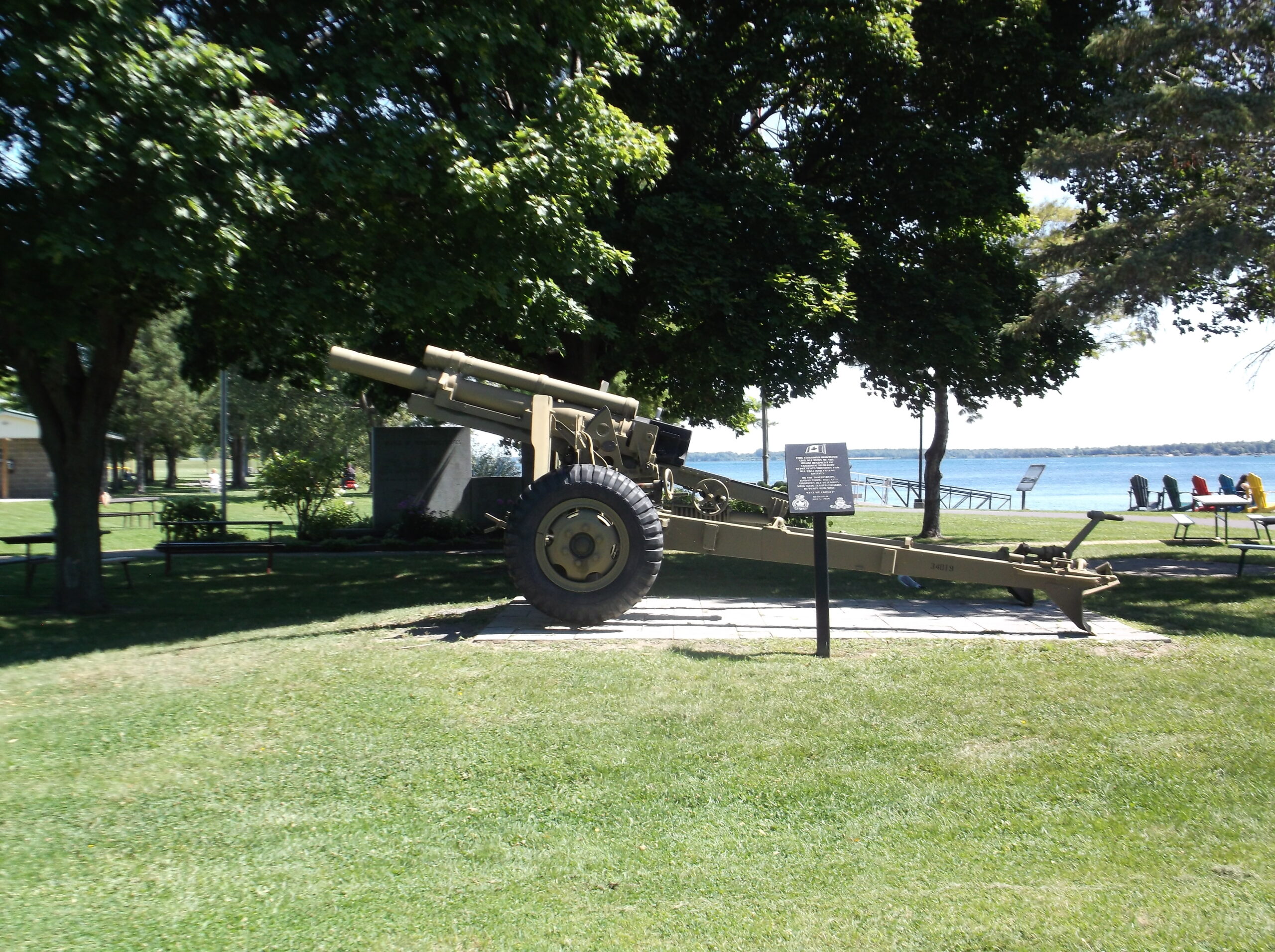S.D. & G. REMEMBERS ITS HEROES
The men and women of SD&G rushed to the Flag with the declaration of the 20th century’s two World Wars, and the Korean Conflict, making a significant contribution to each struggle. To honour the men and women who served and died, grateful citizens have dedicated more than 40 monuments to their heroism
This year I am going to focus on Morrisburg’s two cenotaphs and one Memorial Park.
To provide a lasting tribute to the eighteen men and one Nursing Sister from Morrisburg and area who died as result of injuries sustained during the First World War, the Morrisburg Soldier’s Monument Association raised $10,000 in 1923 (approximately $170,700 in 2024), to fund a cenotaph.
Created by sculptor George Wm. Hill of Montreal, a renowned member of the Royal Canadian Academy of Arts, the monument was unveiled in front of a crowd of 5,000 people on Sept. 9, 1923.
In describing the memorial, a reporter for the Morrisburg “Leader” wrote:
“The figure of bronze, 10 feet high, is that of an Infantry Man who, having laid off his equipment of war, is in the act of proclaiming peace.
His right hand is upraised while he shouts glad tiding and with his left hand he presses the victorious Flag to his heart. A wreath of Laurel leaves is held against the Flag, a symbol of achievement. On the die is placed the Dove of Peace, which is descending to the Globe.”
The Countess of Minto, the former Marion Cook of Morrisburg said:
“Through the long dark years of the war – through the following years of upheaval and unrest God has guided us to the present, and he has gathered us here today for the unveiling of this everlasting tribute, which is erected in proud and affectionate memory of those who dutifully answered the call, and who so heroically gave their lives.
Many hearts are saddened, many homes are changed, but both are filled and strengthened by the knowledge that for their gallant sons we must carry on.
To the Glory of God and in honoured memory of the men of Morrisburg and vicinity who, during the great war of 1914 – 1918 gave their lives for God, for King and Country, for loved ones, and for home and Empire, for the sacred cause of justice and freedom of the world, I unveil this monument.
May we the children, and our children’s children ever cherish and honour the names herewith inscribed.”
Located in old Morrisburg’s Main Street in Monument Square, it was the last structure to be moved from the street to its new location in front of the new Civic Centre, in April 1958, as part of the Seaway building relocation project.
Moved by Arthur Wells from the New Town of Ingleside, everyone was surprised to find a glass bottle in the pedestal under the bronze soldier when it was moved.
Reporter W. Gibb in the November 8, 2018 edition of “The Leader,” wrote:
“J.H. Meikle whose son Gerald was lost in the Great War in August of 1918, had arranged the contents. Four coins current at the time; the honour roll of those who had made the supreme sacrifice and those who had served overseas and honours won, a list of subscriptions to the monument fund including $2,000 from the Women’s Institute; printed materials and various publications.”
The bottle and contents were returned to the cenotaph’s base when the soldier was reinstalled on the monument.
Instead of simply adding the names of the deceased from the Second World War to the original monument, The Royal Canadian Legion and Ladies Auxiliary, Branch 118 Morrisburg, had a new cenotaph erected to “…the Gallant Men…who paid the Supreme Sacrifice in World War II.”
Dedicated to the 17 local men who died, it is interesting to see how different the Second War was from the First. During the First War, all of the men who were killed served in the Army, while in the Second War, seven men were in the Air force, eight in the Army, one in the navy and one in the Merchant Navy.
Morrisburg’s waterfront is also home to the Royal Canadian Legion Memorial Park. A cenotaph was unveiled here in 1991 and carries the following inscription:
Honour To Whom Honour Is Due
To One Who Has Defended
All That We Most Cherish
LIBERTY PEACE JUSTICE
A World War II howitzer was added to the park in 2014. The plaque reads:
Like All Guns of the Royal Regiment of Canadian Artillery Represents Honour for All Past and Future Battles…This Gun Honours All Veterans Who Have Served Canada in Peace and War.
CORNWALL – During the Second World War, Cornwall’s per capita contribution to the War effort through the Armed Forces, industrial output and community effort, was one of the highest in Canada.
Militarily the SD&G Highlanders took part in the invasion of Normandy and then fought in northeast Europe to the end of the conflict. Other local men fought in Italy, while others served with the Royal Canadian Artillery. In total, 183 local men died: ten sailors; 109 soldiers and 64 airmen. The War claimed no less than 489 men and women from SDG.
The Korean Conflict claimed three lives.
World War I took the lives of at least 335 men and women throughout SDG; 88 came from Cornwall and Cornwall Township.





